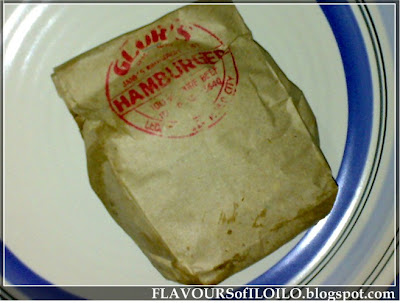
While waiting for my order, I (again, courageously) took some shots of the interiors. The ambiance was nowhere near any diner or hamburger joints, it looked as though it just an ordinary snack house tucked along a crowded street. It had almost no character at all despite its "history" if not for the presence of around 30 framed film and play posters dotting the walls.
 Then my order arrived, it was a Glors Deluxe. Its their own version of a Big Mac. Two patties tucked between three layers of bun plus vegetables and cheese. Nothing spectacular whatsoever but for 43 pesos (additional 3 pesos for veggies) it's more than worth the price compared to fastfood burgers.
Then my order arrived, it was a Glors Deluxe. Its their own version of a Big Mac. Two patties tucked between three layers of bun plus vegetables and cheese. Nothing spectacular whatsoever but for 43 pesos (additional 3 pesos for veggies) it's more than worth the price compared to fastfood burgers.

 My take out was their American something. I really had no idea what it would be like and expected it to be much better than the one I ate since it took time to prepare. When I finally opened it at home, I was dimayed since it was just bun and patty plus catsup and mayo. What made it "American" was its the patty since it was big (almost twice their regular patty) and the flavour is different. Even I just had dinner when I took pictures, I quickly finished this one.
My take out was their American something. I really had no idea what it would be like and expected it to be much better than the one I ate since it took time to prepare. When I finally opened it at home, I was dimayed since it was just bun and patty plus catsup and mayo. What made it "American" was its the patty since it was big (almost twice their regular patty) and the flavour is different. Even I just had dinner when I took pictures, I quickly finished this one.
 It was my curiosity that was satisfied not my appetite but I still plan of making another visit and maybe that time I could find something special. Now if only they could add more ambiance by redesigning their interiors, improving their fixtures and make everything more special then they'll truly become an icon.
It was my curiosity that was satisfied not my appetite but I still plan of making another visit and maybe that time I could find something special. Now if only they could add more ambiance by redesigning their interiors, improving their fixtures and make everything more special then they'll truly become an icon.

